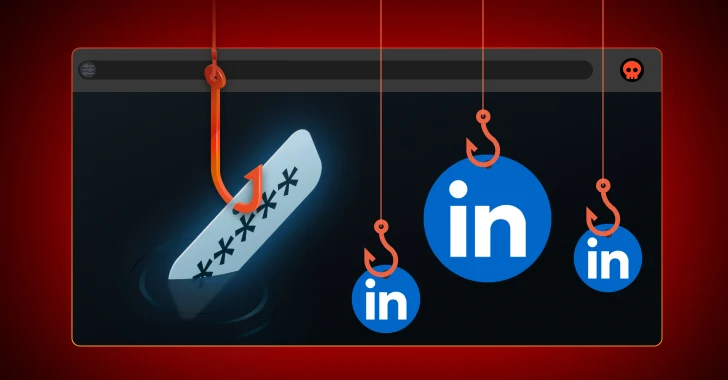LinkedIn: The New Frontier for Phishing Attacks
Phishing attacks have evolved beyond traditional email-based schemes, with platforms like LinkedIn emerging as prime targets for cybercriminals. This shift poses significant challenges for organizations, as attackers exploit the trust and professional nature of LinkedIn to deceive users.
1. Circumventing Traditional Security Measures
LinkedIn’s direct messaging system allows attackers to bypass conventional email security tools. Employees often access LinkedIn on corporate devices, yet security teams lack visibility into these communications. This absence of oversight enables malicious actors to deliver phishing messages directly to users without interception. Modern phishing kits further complicate detection by employing obfuscation and anti-analysis techniques, rendering traditional web traffic inspections ineffective. Consequently, organizations are left relying heavily on user vigilance and reporting, which may not always be reliable.
2. Cost-Effective and Scalable Attacks
Phishing via LinkedIn offers a cost-effective and scalable approach for attackers. Unlike email-based attacks that require domain setup and reputation building, LinkedIn allows for rapid account creation and messaging. Moreover, attackers often hijack legitimate accounts, leveraging existing networks and trust. Notably, 60% of credentials found in infostealer logs are linked to social media accounts, many of which lack multi-factor authentication (MFA). This deficiency provides attackers with credible platforms to launch their campaigns.
3. Exploiting Professional Trust
LinkedIn’s professional environment fosters a sense of trust among users. Attackers exploit this by impersonating recruiters, potential clients, or colleagues to deliver malicious links or attachments. The professional context makes users more susceptible to these tactics, as they are less likely to question the legitimacy of communications on this platform.
4. Targeting High-Value Accounts
Cybercriminals focus on high-value targets such as executives and employees with access to sensitive information. By compromising these accounts, attackers can gain entry to critical business functions and datasets. For instance, a single account takeover can escalate into a multi-million dollar breach, especially when attackers leverage Single Sign-On (SSO) to access connected applications.
5. Leveraging Personal Devices for Corporate Breaches
Even when attackers reach employees on personal devices, the risk to corporate security remains significant. The 2023 Okta breach exemplifies this, where an attacker exploited the synchronization of credentials between an employee’s personal and work devices. This incident underscores the potential for personal device compromises to translate into corporate account breaches.
Beyond LinkedIn: A Broader Threat Landscape
The issue extends beyond LinkedIn. With the proliferation of decentralized internet applications and varied communication channels, it’s increasingly challenging to prevent users from interacting with malicious content. Attackers utilize instant messaging apps, social media, SMS, and even trusted SaaS platforms to deliver phishing links. The vast array of applications per enterprise, each with varying security configurations, further complicates defense efforts.
Mitigating the Risk: Browser-Based Security Solutions
To combat modern phishing attacks, organizations must adopt solutions that detect and block phishing attempts across all applications and delivery vectors. Implementing security measures at the browser level can provide real-time analysis of page code, behavior, and user interactions, effectively shutting down attacks as they occur. Such solutions can also address browser-based threats like adversary-in-the-middle (AiTM) phishing, credential stuffing, malicious extensions, and session hijacking.
By proactively identifying and addressing vulnerabilities across the applications employees use, organizations can enhance their defense against evolving phishing tactics.



